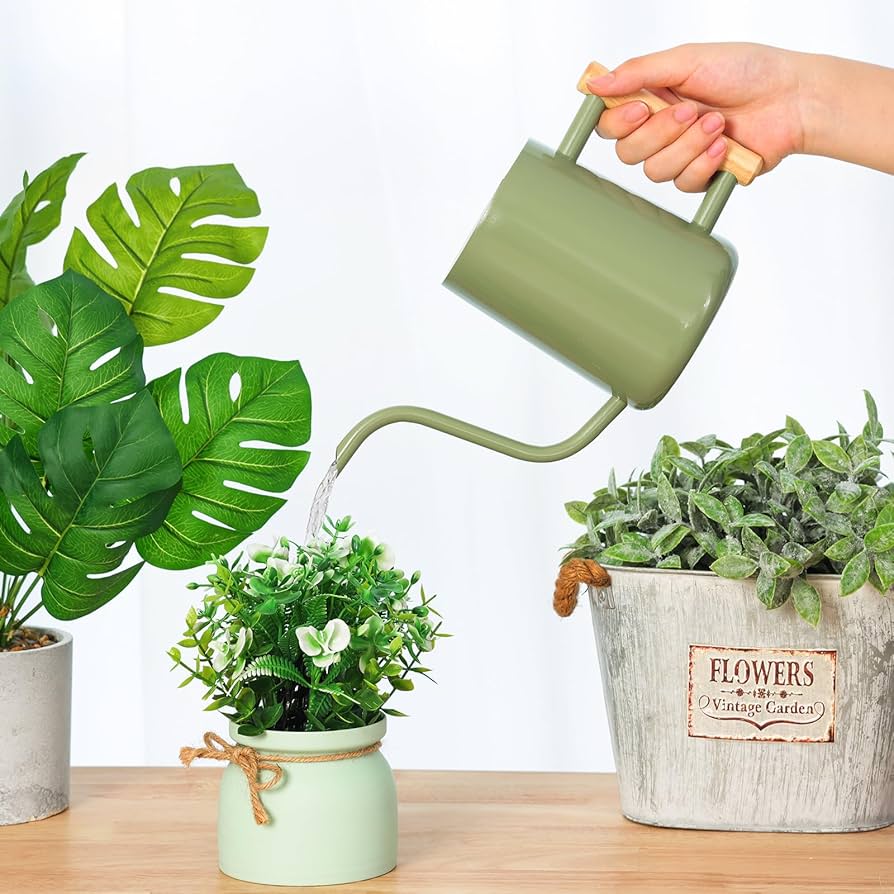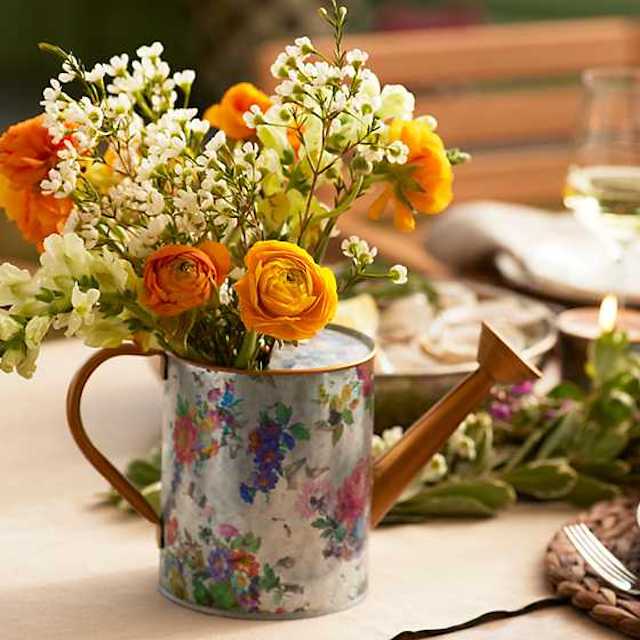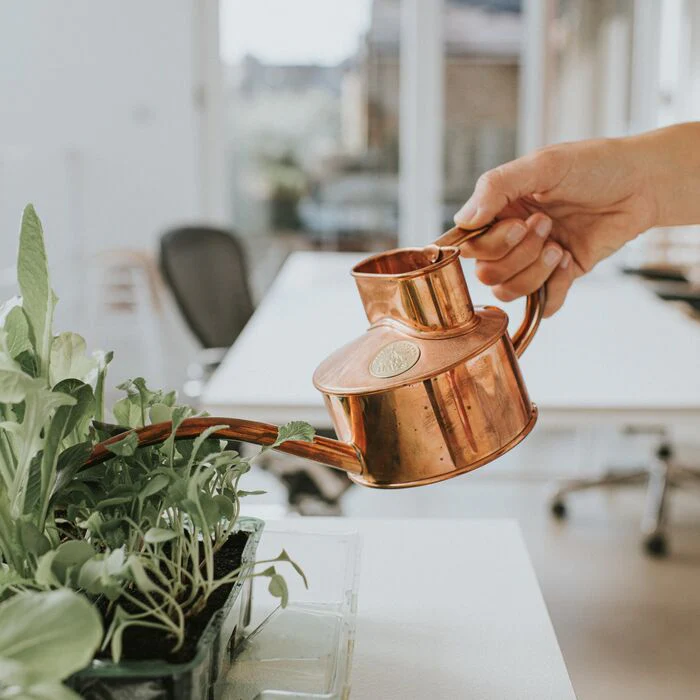
Efficient Plant Growth: The Best Watering Can for Indoor Plants
Importance of Choosing the Right Watering Can
Selecting the best watering can for indoor plants is crucial. A good watering can helps to apply water efficiently and without waste. It also ensures that your plants receive the correct amount of water. This is important because too much or too little water can harm plant growth. The right watering can design makes the task easier and more enjoyable. Look for one that suits the size of your indoor garden and your physical abilities. A well-chosen watering can also minimize effort and reduce the risk of spills. Finally, a high-quality watering can is an investment. It will last longer and perform better than a cheaper, less durable option. In summary, the right watering can save time, keep plants healthy, and provide convenience.
Types of Watering Cans Suitable for Indoor Gardens
When choosing the best watering can for indoor plants, consider the different types. The marketplace offers various styles to suit every need. Here are the common types you’ll find:
- Plastic Watering Cans: These are lightweight and cost-effective. They come in many colors and sizes. They’re ideal for those on a budget.
- Metal Watering Cans: Often made from stainless steel or galvanized steel, these cans are durable. They’re heavier than plastic but can last for years.
- Ceramic Watering Cans: Ceramic adds a decorative touch to your garden space. However, these are more fragile than metal or plastic.
- Collapsible Watering Cans: Great for saving space. When not in use, you can fold them up and tuck them away.
- Watering Cans with Long Spouts: These are perfect for reaching tight spaces. The long spout offers precise watering, reducing spillage.
Each type has its benefits, so select the one that aligns with your indoor gardening needs. Think about the weight when full, ease of storage, and how well it pours. A good rule of thumb is to find a balance between functionality and aesthetics. You want your watering can to do the job well and look good in your indoor garden.
Factors to Consider When Selecting a Watering Can
Choosing the best watering can for indoor plants involves several considerations to ensure optimal performance and ease of use. Here are key factors to keep in mind:
- Watering Capacity: Consider the volume of water the can holds. A larger capacity means fewer refills, but it should not be too heavy when full.
- Can Material: The material of the can affects its durability and weight. Plastic is light, metal is sturdy, and ceramic is decorative.
- Spout Design: Look for a spout that provides a steady, controlled flow. A long spout can reach plants in tricky spots.
- Handle Comfort: Ensure the handle is comfortable to grip. This will make watering less taxing on your hands and wrists.
- Ease of Filling: The can should be easy to fill. A wide opening helps prevent water from spilling when pouring it in.
- Balance and Control: A good can should be easy to tilt and control. It should not tip over when it’s full or empty.
- Storage: If space is tight, consider a can that’s compact or collapsible. It should store away neatly when not in use.
- Ease of Cleaning: Select a can that’s easy to clean to prevent algae build-up and blockages. Removable spouts or open-topped designs work well.
Consider these factors together to find the best fit for your indoor gardening needs. The goal is to water your plants effectively with minimal effort and hassle.
The Best Watering Can Materials for Durability and Function
Choosing the right material for a watering can is key for both durability and functionality. Plastic, metal, and ceramic are the most common materials used. Each has unique benefits to consider. Here’s a breakdown:
- Plastic: Plastic is the go-to for those seeking lightness and affordability. It’s resistant to rust and can survive drops and falls. But, it may degrade over time with exposure to sunlight.
- Metal: Options like stainless steel or galvanized steel offer longevity. Metal watering cans can handle wear and tear, making them a sturdy choice. However, they will be heavier and may require more strength to use when full.
- Ceramic: Ceramic cans serve a dual purpose. They water your plants and add aesthetic value to your space. While less practical for frequent use due to their fragility, they’re perfect for decor and light watering needs.
The best watering can for indoor plants will blend practicality with endurance. Metal cans lead in durability, withstanding years of use. Plastic is preferred for its ease of handling, especially if you move your can often. Ceramic, while not as robust, offers an elegant touch to your indoor garden.
When selecting your can, take into account how it will harmonize with your daily gardening. Consider how often you’ll use it and where it will be stored. Durability and function are paramount, but so is choosing a material that fits your gardening lifestyle.
Ergonomic Designs for Comfort and Ease of Use
When choosing the best watering can for indoor plants, ergonomics play a huge role. Comfortable, ergonomic designs can prevent strain on your hands and back. Here are factors that point to a good ergonomic design.
- Lightweight Construction: A can that’s light when empty will be easier to handle when full.
- Curved Handles: Look for handles that match the natural grip of your hand. This design eases the stress on your wrists.
- Balanced Weight Distribution: When filled with water, a good can should feel balanced. This makes for easier lifting and carrying.
- Thumb-Controlled Water Valves: Some cans have valves that you control with your thumb. This gives you better control over the water flow and reduces hand fatigue.
- Back-Saving Length: For tall indoor plants, choose a can with a long spout. This prevents you from stooping.
Each of these features aims to reduce the effort required to water indoor plants. They help make the task a more enjoyable and pain-free experience. Keep these ergonomic qualities in mind to find the best watering can for your indoor garden comfort.
Watering Can Capacity and Size for Indoor Use
When seeking the best watering can for indoor plants, size and capacity matter. Aim for a can that matches your indoor gardening scale. Here are key points to keep in mind:
- Appropriate Capacity: Choose a watering can that holds enough water for your plants without needing constant refills. Yet, be wary of one too heavy when full.
- Size Matters: A large can might be hard to maneuver around tight spaces. A smaller one may fit better in an indoor setting.
- Weight When Full: Remember, water adds weight. A full can should be comfortable to carry around your garden.
- Compact Design: If space is limited, opt for a watering can with a sleek, space-saving design.
- Measurements: Some cans have measurements marked. This helps in providing precise amounts of water to your plants.
Selecting the right capacity and size will make your indoor gardening more efficient and enjoyable. A can that’s too big or small can make watering a chore. Strike a balance that works best with your indoor layout and plant collection.
Innovative Features in Modern Watering Cans
Modern watering cans come with smart features to enhance indoor gardening. These advancements offer convenience and cater to specific plant care needs. Below are innovative elements you might find in the best watering can for indoor plants:
- Adjustable Nozzles: Some cans feature nozzles with settings. You can switch from a gentle shower to a steady stream.
- Built-In Measuring Scales: Transparent or marked sides help measure water exactly. This ensures accurate watering.
- Lockable Sprinkler Heads: This function prevents accidental water release. It’s perfect for moving the can without spills.
- Ergonomic Trigger Handles: These reduce thumb fatigue. They let you control the water flow with minimal effort.
- Detachable Spouts: Easy removal and cleaning of the spout prevents clogs. This helps maintain a consistent water flow.
- Integrated Filters: Filters trap debris and prevent clogs. Clean water flows to your plants each time.
- Foldable or Collapsible Bodies: Great for small spaces. These cans shrink down for storage and expand for use.
- Dual-Function Designs: Some cans combine watering with other tasks. You might find cans with built-in misters for delicate plants.
Modern designs make indoor plant care easier and more effective. Always look for features that suit your specific gardening requirements. The right can with the right features can transform watering from chore to joy.
Tips for Maintaining Your Watering Can
Maintaining the best watering can for indoor plants ensures longevity and optimal performance. Here are some straightforward tips to keep your watering can in prime condition:
- Regular Cleaning: Empty your can after each use. Rinse it with clean water to prevent algae and mineral build-up.
- Check for Blockages: Inspect the spout and nozzle. Unclog any debris to maintain a steady water flow.
- Dry Properly: Avoid rust and wear by drying the can after cleaning. Store it in a dry place.
- Handle with Care: Even durable cans need careful handling. Avoid dropping or harsh treatments.
- Sunlight Protection: For plastic cans, limit direct sun exposure. Prolonged sunlight can cause the material to weaken.
- Regular Inspections: Look for signs of wear or damage. Replace parts like washers or seals if needed.
By following these simple maintenance steps, you ensure your watering can serves well for many seasons. Proper care also helps in precise and efficient watering, keeping your plants healthy and happy.

